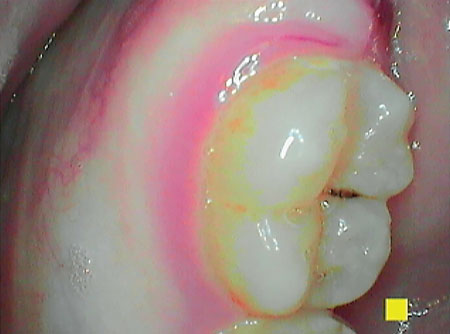By Amber Auger, RDH, MPH
The roles of the dental hygienist are an educator, clinician, researcher, manager and an advocate for prevention of diseases.1 We have the ability to address the patients’ high-risk factors for tooth decay, periodontal disease, and systemic diseases while bridging the educational gap between periodontal health and systemic health. This unique role could save the life of a patient by identifying symptoms for life-threatening conditions.
Influential patient education is essential to establishing change in the life of the patient, and an intraoral camera elevates our ability to connect the education to the patient. Acteon has created the SoproCare camera that differentiates the color of tissues to reveal inflammation.2
SoproCare was created for dental clinicians to educate during periodontal and prophylaxis treatment.2 The camera offers three modes: Perio mode, Cario mode, and Daylight Mode. Each mode has been designed to engage patients and increase compliance to treatment recommendations.
Perio mode allows the clinician to provide a more complete assessment of the patient’s oral health by rapidly assessing gingival inflammation, plaque, and calculus.2 Through the usage of LED lights, the camera demonstrates new plaque, which is shown as white, and the old plaque that is demonstrated in a yellow and orange shade.2
This allows patients to see the bacteria that was left behind even after their most recent brushing, which increases their need to change their oral health regime. The degree of gingival inflammation is detected with a light pink color to represent mild inflammation through a deep magenta to represent severe inflammation.2
 |
| Acteon has created the SoproCare camera that differentiates the color of tissues to reveal inflammation. |
In addition, the images allow the clinician to identify specific areas for the patient to improve on, and the images can be used document current oral conditions. The initial images can serve as a baseline to track improvements or progression of disease. Clinicians can praise the patients’ enhanced home care techniques during their preventive care appointments.
